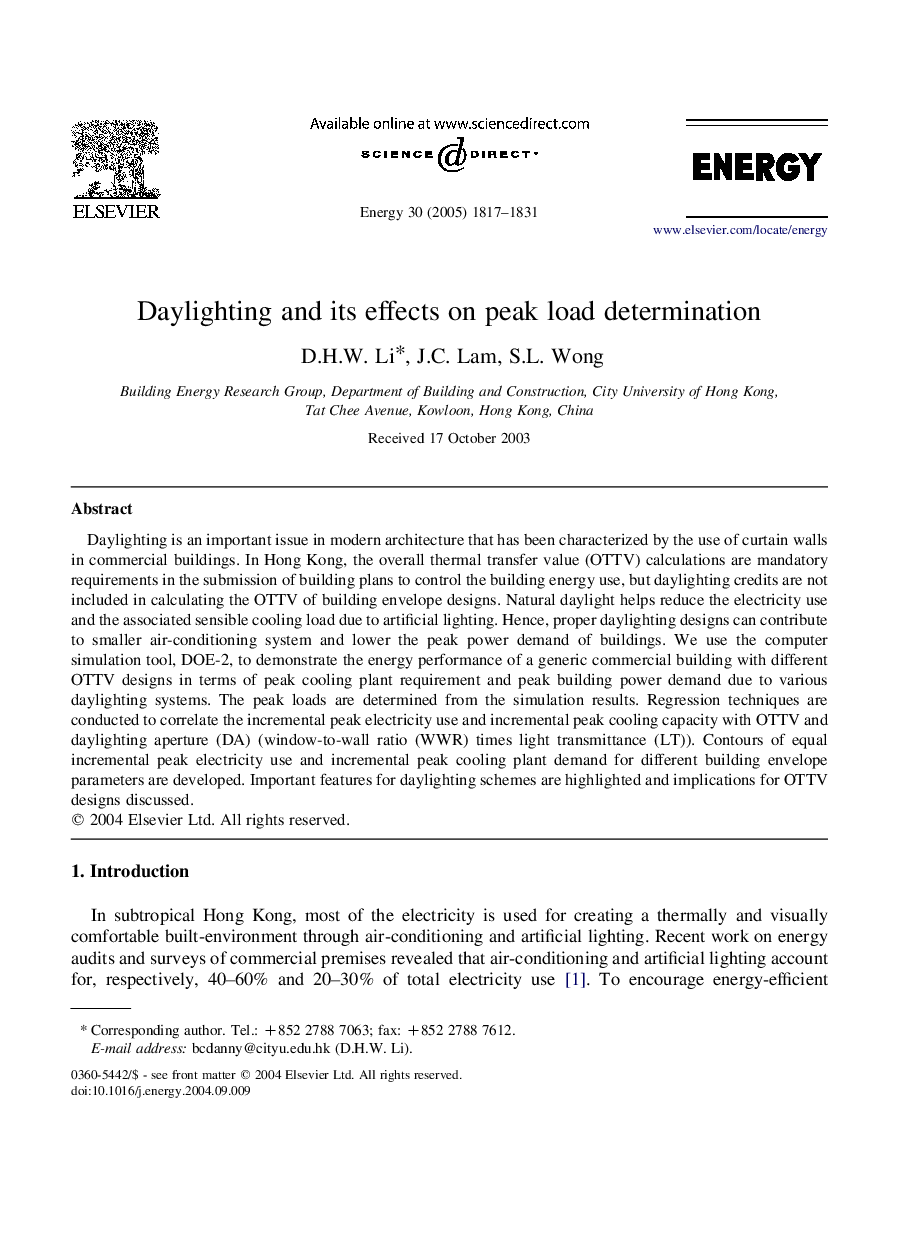| Article ID | Journal | Published Year | Pages | File Type |
|---|---|---|---|---|
| 1736632 | Energy | 2005 | 15 Pages |
Daylighting is an important issue in modern architecture that has been characterized by the use of curtain walls in commercial buildings. In Hong Kong, the overall thermal transfer value (OTTV) calculations are mandatory requirements in the submission of building plans to control the building energy use, but daylighting credits are not included in calculating the OTTV of building envelope designs. Natural daylight helps reduce the electricity use and the associated sensible cooling load due to artificial lighting. Hence, proper daylighting designs can contribute to smaller air-conditioning system and lower the peak power demand of buildings. We use the computer simulation tool, DOE-2, to demonstrate the energy performance of a generic commercial building with different OTTV designs in terms of peak cooling plant requirement and peak building power demand due to various daylighting systems. The peak loads are determined from the simulation results. Regression techniques are conducted to correlate the incremental peak electricity use and incremental peak cooling capacity with OTTV and daylighting aperture (DA) (window-to-wall ratio (WWR) times light transmittance (LT)). Contours of equal incremental peak electricity use and incremental peak cooling plant demand for different building envelope parameters are developed. Important features for daylighting schemes are highlighted and implications for OTTV designs discussed.
